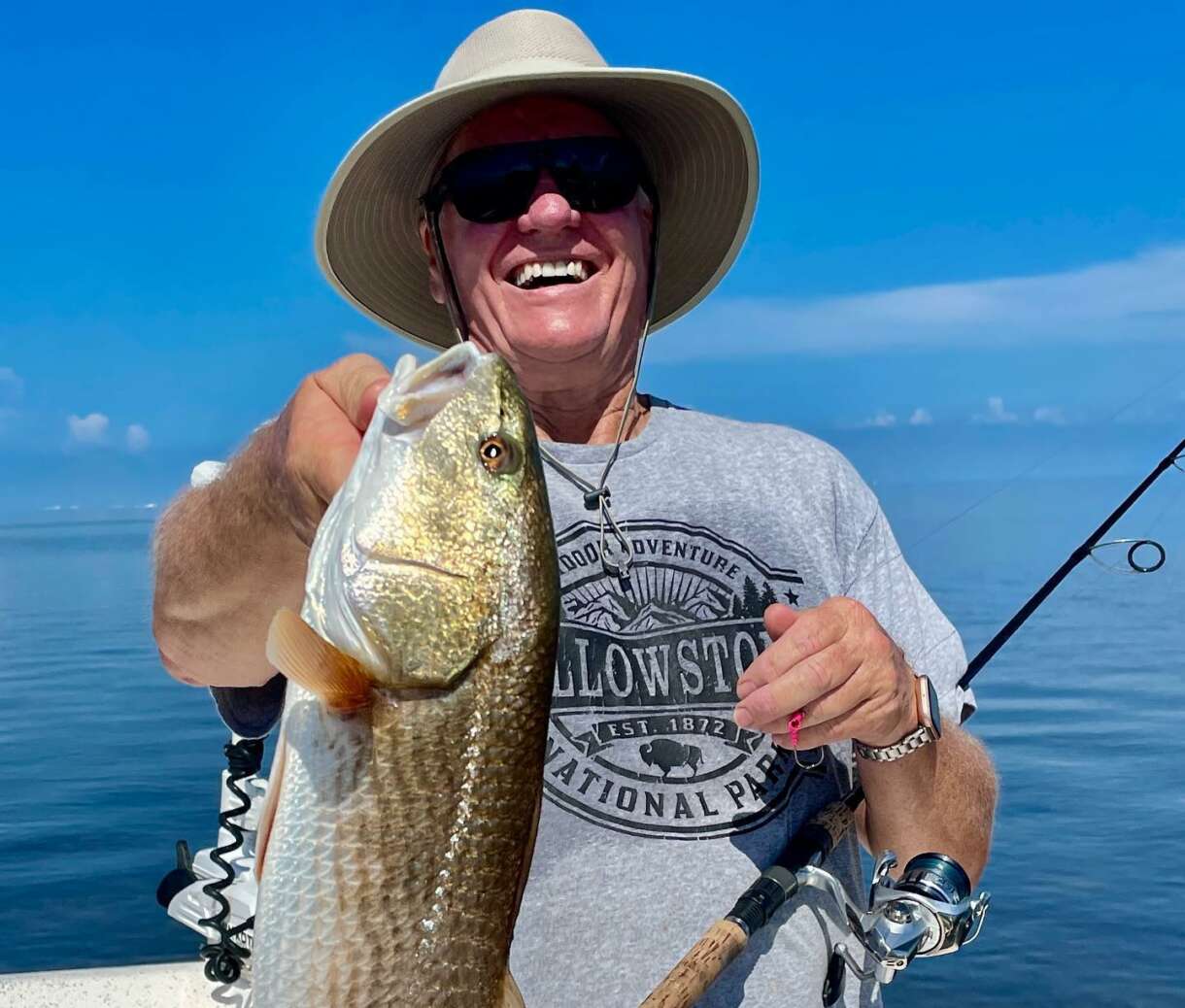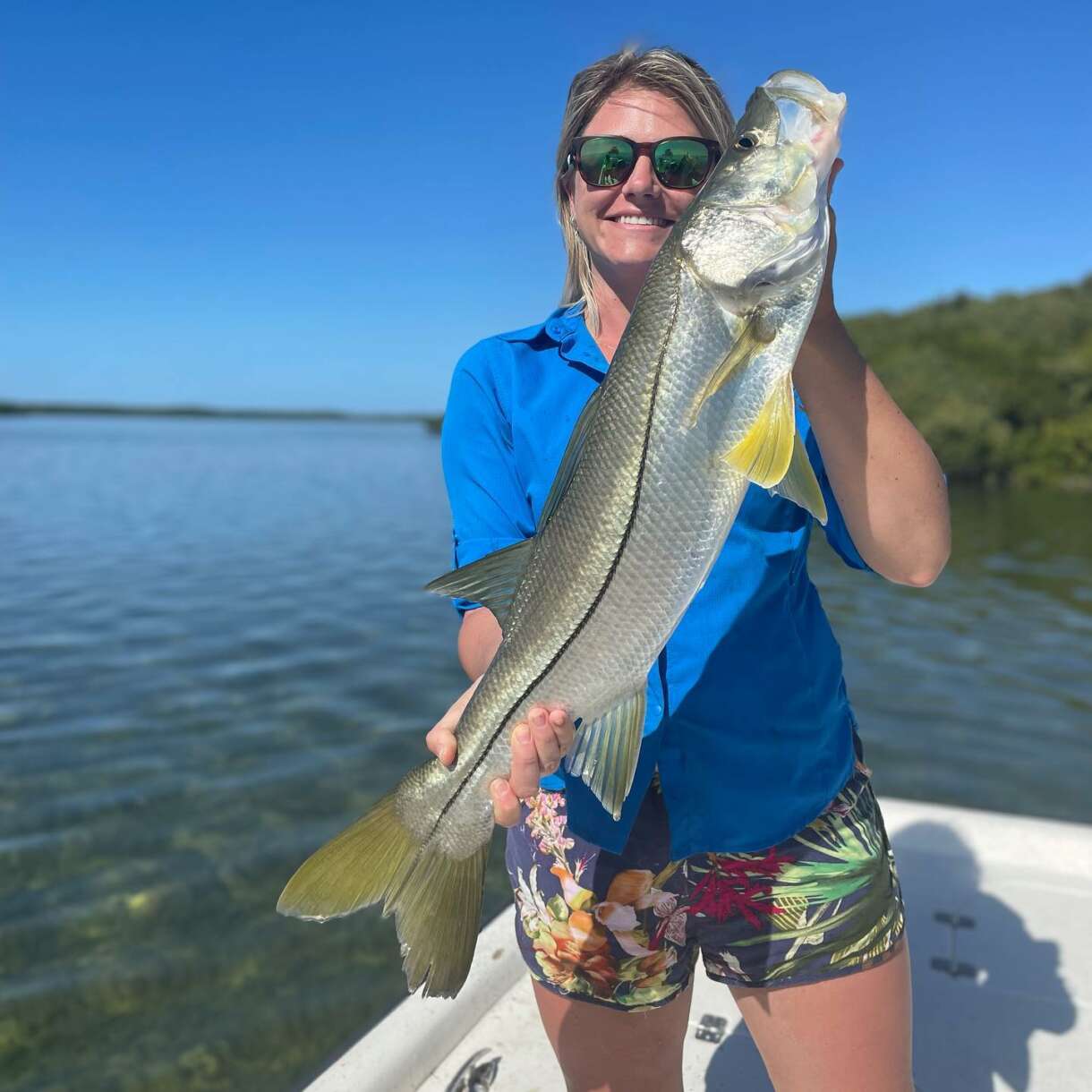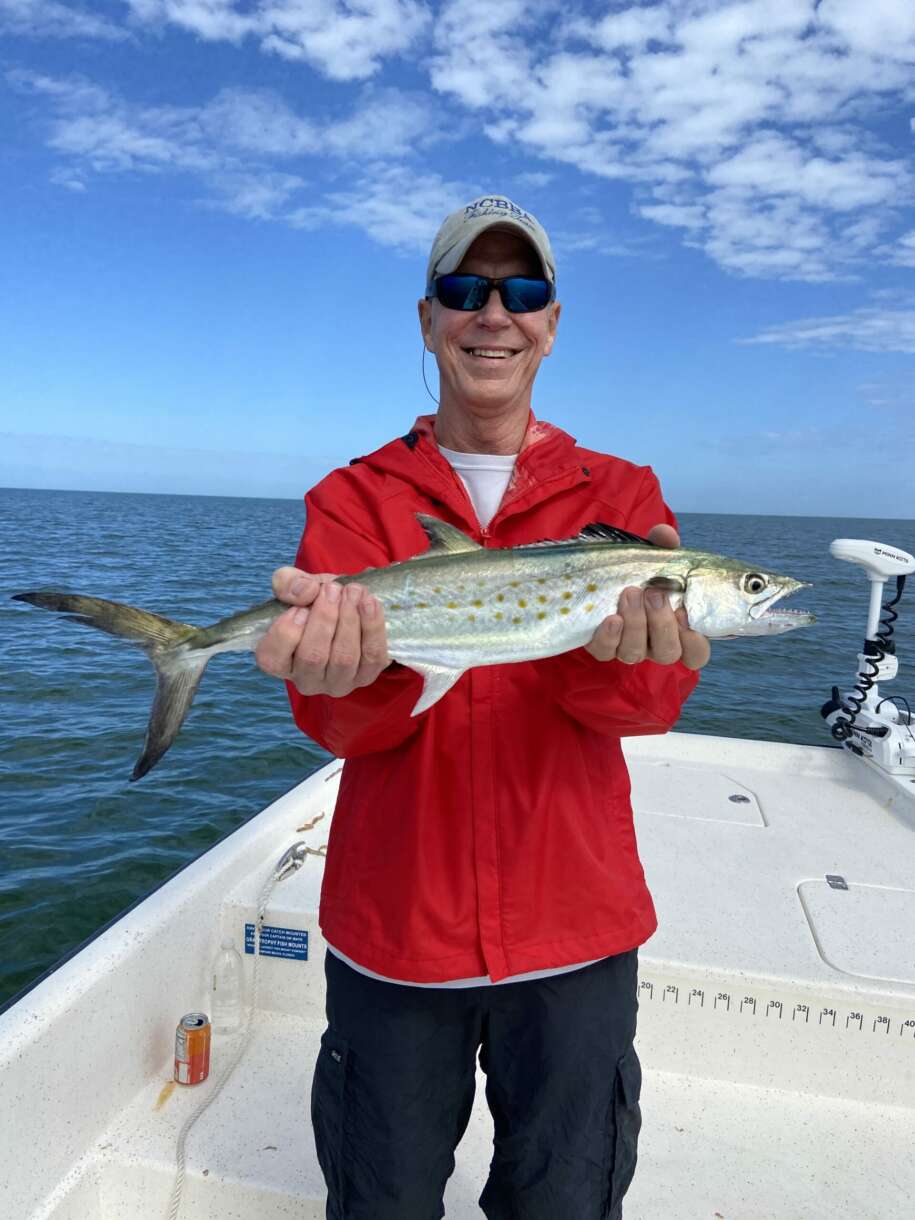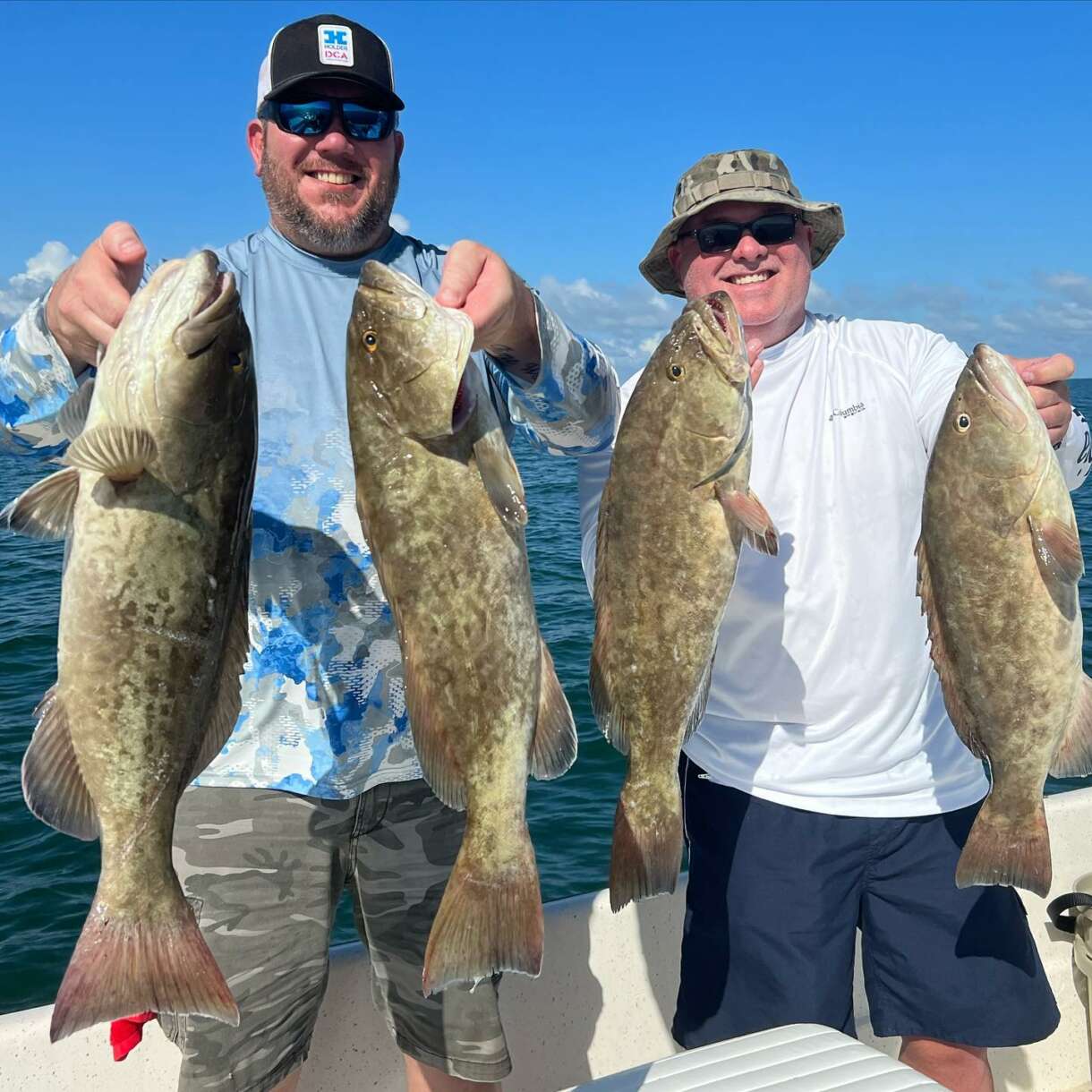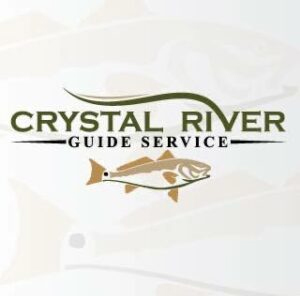Crystal River sits on a spring-fed coastline filled with grass meadows, limestone outcrops, oyster bars, and a maze of tidal creeks. After summer, the fishery settles into a steady rhythm that rewards fishermen who read tide, light, and bait movement with care. This guide lays out the species that commonly bite from early fall into the first cool snaps, along with habitats, rigs, and boat tactics that fit this stretch of the Gulf. The focus remains informational for planning or briefing a charter group.
Calendar And Conditions From September Into Early Winter
September ushers in milder mornings and evenings. By October and November, water temperatures often sit in a comfortable range for active feeding, and the sun angle lowers enough to extend shallow-water movement during daylight. Wind typically swings with passing fronts and can shift water color across flats and creek mouths. Clear spring influence still shows in many pockets, which creates classic sight-casting chances on sunny days with light ripple.
Bait presence sets the tone. Finger mullet travel shorelines and points, pilchards stage near channel edges, and shrimp activity pops across grass. Predators key on this steady forage, and many patterns hold until the first true winter push.
A Working Map Of Crystal River Habitats
Grass Flats
Three to five feet of turtle grass and shoal grass form a carpet across much of the inshore zone. Potholes and sand lanes break the grass and function like miniature highways for trout and redfish. On calm mornings, wakes and subtle pushes telegraph fish sliding across these features.
Limestone And Rock
Crystal River’s limestone gives the shoreline a hard edge in many places. Rock bars, rubble patches, and knobby points collect baitfish and shrimp. Snook, mangrove snapper, and larger trout set up along shade lines, seams, and eddies that form around this structure.
Oyster Bars And Spoil
Live and dead oyster create jagged, productive seams at creek mouths and along bends. Redfish use them like stop-and-feed stations. Black drum and sheepshead pick across the shells with a steady, rhythmic bite.
Tidal Creeks And Backcountry Lakes
Narrow drains, bends with undercut banks, and small interior bays connect to the flats. During fall, these lanes move forage on every tide cycle. Snook, redfish, small tarpon, and trout slide in and out through the day.
Springs And Clear Pockets
Spring vents maintain clarity in specific zones. In these windows, subtle presentations excel. Sight-casting becomes possible for single redfish, laid-up snook, and large trout.
Primary Species After Summer
Redfish
Redfish form tight groups on shallow flats and slide along oyster bars with the tide. Tail tips, copper backs, and small puffs of silt give them away.
Tactics that fit this season:
- Weedless soft plastics in natural patterns. Cast to the up-tide side of pushes and let the lure glide into the lane.
- Gold or copper spoons with a slow, rhythmic retrieve across grass and sand lanes.
- Live shrimp or small pinfish under a popping cork, set with a leader length that grazes the grass tops.
- Cut bait on circle hooks for stationary work at creek mouths or bar tips.
Boat handling matters. Pole or drift quietly with the wind, keep hull slap to a minimum, and plan angles that deliver cross-current presentations instead of chasing wakes.
Spotted Seatrout
Trout set up around sandy potholes, grass edges, and current seams. Single large fish often hold near isolated features, while school fish distribute along longer grass stretches.
Approaches that produce:
- Topwater at first light across clean lanes and low ripple. Walk the bait with pauses over every pothole.
- Soft plastic jerkbaits on light jigheads for mid-morning. Count the drop, then twitch across the edge.
- Popping corks with a shrimp or pilchard to search new flats. Space drifts to cover fresh water each pass.
Handle big trout with wet hands, keep them over the water for photos, and release them quickly when practicing catch and release.
Snook
Rock points, dock shade, and creek mouths hold snook well into fall. Outgoing water carries scent and bait, so seams and current tongues become prime lanes.
Presentations that track with fall behavior:
- Suspending twitchbaits around rock and timber. Short twitches and long pauses shine in clear water.
- Free-lined finger mullet or pilchards placed on the edge of moving water.
- Soft swimbaits that pulse across eddies at the mouth of a creek.
A quick, gentle release helps this species thrive through the season’s first cooler nights.
Sheepshead
The earliest arrivals stack on rock, pilings, and barnacled edges. The bite comes as small taps followed by steady pressure.
Keep it simple:
- Fiddler crabs or small shrimp on size 1 to 1/0 hooks.
- Short leaders of abrasion-resistant mono around structure.
- A slow lift to set the hook without jerking.
Sheepshead often share water with snapper and drum, so mixed catches make sense around the same structure.
Mangrove Snapper
These fish patrol rock edges, dock lines, and marker bases. They crush small baits and then dive for cover.
Dialed-in options:
- Free-line shrimp on light wire hooks. Keep the bait near the face of the structure and stay ready to turn the fish.
- Small jigs tipped with shrimp or cut bait worked along the shadow line.
- Chum sparingly with crushed shrimp to keep fish interested without feeding them off.
Black Drum
Drum roam oyster fields and deeper edges of tidal channels. They take crustaceans with a steady vacuum pull.
Productive choices:
- Quartered blue crab or shrimp on the bottom with a no-roll sinker.
- Casts that land up-current and settle into the strike zone without dragging.
- Quiet anchoring that keeps pressure off the bite area.
Flounder
Flounder park on sand tongues, drop-offs, and creek mouths. They attack and then settle.
Work the bottom:
- Bucktail jigs tipped with shrimp or mud minnows, hopped and then rested for a beat.
- Finger mullet on a Carolina rig dragged slowly along an edge.
- Pauses after the first thump to allow a solid jaw set.
Jack Crevalle
When bait showers across a flat, jacks explode. The surface boils look like a pot on a stove.
Lean into the chaos:
- Topwater plugs cast past the froth and ripped across the commotion.
- Live bait tossed in front of a moving school.
Expect a long, grinding fight on inshore tackle. Plan a quick release.
Spanish Mackerel And Bluefish
Clean water outside the river and along open-water grass edges attracts fast packs of mackerel and bluefish. Birds help mark the action.
Two easy plays:
- Casting spoons or flash jigs into breaking fish and retrieving with steady cadence.
- Small trolling plugs that run just under the surface along color changes.
Use short bite guards of wire or heavy mono to reduce cutoffs.
Tripletail Around Floats And Markers
Trap floats, crab pot lines, and random debris create shade pockets that draw tripletail in fall. These fish often hold tight to the object.
Approach with stealth:
- Drift close and present a small shrimp on a short leader.
- Keep the cast slightly past the target and slide the bait into view.
A net saves fish and tackle at the boat.
Pompano On Sand Runnels
When current scours sand runnels near passes and outer flats, pompano roam those lanes.
Keep contact with the bottom:
- Small jigs with shrimp scent bounced rhythmically across the sand.
- Short pauses to kick up puffs that trigger strikes.
Reading Tide, Moon, And Light
Tide rules the day. Incoming water spreads across flats and carries shrimp and minnows into grass. Outgoing water collects forage in drains and at bar tips. New and full moon periods bring wider tide ranges that open long windows around creek mouths and passes. Quarter phases often create tighter windows that reward precise timing at specific features.
Light direction matters. Morning sun at a low angle can expose wakes and push trails across slick grass. Midday sun can unlock sight-casting in spring-clear pockets. Late afternoon shade along rock and dock lines creates ambush edges that suit snook and snapper.
Cloud cover changes cadence. On gray skies, topwater can hold value for a long stretch, and fish often roam away from tight edges. On bluebird days, fish glue to contrast lines and pothole rims.
Boat Positioning And Quiet Water Skills
A quiet hull and planned drift add bites without any lure change. Trim the motor early, then either pole, spot-lock, or set a shallow-water anchor outside the target zone. Aim presentations across seams, not directly down them, so baits pass naturally through the feed line. In clear pockets, crouch, limit deck noise, and keep casts low. Sunglasses with copper or amber lenses cut glare and reveal grass edges and cruising backs.
Rigs, Tackle, And Line Choices
- Rods: Seven-foot medium or medium-light spinning rods cover most inshore work. A fast tip helps with light jigs and cork rigs.
- Reels: Inshore-rated 2500 to 3000 sizes with smooth drags handle redfish, trout, and snapper, with room for the surprise jack or snook.
- Main line: Ten to twenty pound braid keeps diameter small for long casts and clean lure action.
- Leaders: Twenty to thirty pound fluorocarbon for rock and oyster zones. Heavier leaders, up to forty, for snook or mackerel bite protection. Short wire for mackerel and bluefish where needed.
- Hooks: Circle hooks for live and cut bait. Inline single swaps for topwater and hardbaits when practicing quick release.
- Corks: Oval popping corks that click cleanly and cast well. Set leader lengths to ride just above grass tops.
- Jigs: One-eighth to three-eighth ounce weights cover most depths and current. Keep hook sizes aligned with shrimp and small baitfish profiles.
Lure And Bait Menu That Matches Fall Forage
- Topwater walkers and small chuggers for dawn trout, reds, and jacks.
- Suspending hardbaits in baitfish colors for snook around rock and docks.
- Soft plastic jerkbaits and paddletails in olive, pearl, and natural brown for grass flats.
- Spoons in gold or copper tones for long grass lanes and stained pockets.
- Live shrimp for universal appeal across trout, reds, snapper, and sheepshead.
- Finger mullet and pilchards for snook and larger redfish around structure.
Keep hook points sharp and change split rings or trebles that show corrosion after a few trips in salty air.
Fish Care, Puncture Safety, And Clean Deck Habits
A little preparation keeps fish healthy and crews safe:
- Use dehookers and pliers for snapper and mackerel to keep fingers clear.
- Keep a wet landing net ready for trout and tripletail.
- Pinch barbs on flies or singles when planning fast releases.
- Ice fish intended for the table immediately and stow them below deck to keep the cockpit clean and slip-free.
- Know how to treat a catfish fin prick or a mackerel cut. Freshwater rinse, pressure, and proper bandaging should live on board with the first-aid kit.
Weather, Safety, And Comfort
Autumn fronts can arrive with short notice. Build a float plan that lists route, return time, and emergency contacts. Watch real-time radar and tide tables. Carry sun protection, a light jacket, and hydration for every passenger. In buggy pockets, head nets and repellents preserve focus during prime fishing windows.
Licenses, Closures, And Local Rules
Regulations change. Bag limits, slot sizes, open dates, and gear restrictions can shift through the year. Before each trip, check the latest FWC guidance for redfish, trout, snook, sheepshead, drum, flounder, mackerel, and tripletail. Many charter operations carry the appropriate licensing for clients on board, though personal shoreline fishing may require an individual license. When in doubt, confirm before lines go in the water.
Tips For Families And New Fishermen
- Short sessions with simple rigs keep the pace engaging. Popping corks and live shrimp create action and teach bite detection.
- Barbless singles on hardbaits limit mishaps and speed up learning on the release side.
- Celebrate each species with a quick photo over the water and a clean release when the plan calls for it.
- Build small goals. A first redfish on a spoon, a trout on topwater, or a sheepshead on a crab can anchor a memory for life.
Common Fall Mistakes And Easy Fixes
- Crowding the fish. Give each bar, point, or pothole a healthy buffer. Plan casts that reach the edge without running the boat into the feed line.
- Racing the retrieve. Many fall bites come on a pause or a slow glide. Count the drop, breathe, then move the lure again.
- Ignoring shade. Rock and dock structure throws precise shade lanes in autumn light. Land lures on the bright side and work into the dark edge.
Seasonal Opportunities in Crystal River’s Inshore Waters
The post-summer period in Crystal River brings steady action across a variety of habitats. Redfish move along oyster bars and grass flats, trout hunt sandy potholes and channel edges, and snook stage at rocky points and creek mouths. Sheepshead, mangrove snapper, black drum, flounder, jacks, mackerel, tripletail, and pompano round out the seasonal lineup, offering consistent variety for fishermen.
The range of environments here, including grass meadows, limestone structure, oyster seams, and backcountry creeks, supports different tactics in a single day. Tide and light remain key to success, with quiet approaches and accurate presentations producing more strikes in the clear water. Live shrimp, pilchards, and finger mullet stay dependable through the season, while a small selection of proven lures, including topwater plugs, suspending hardbaits, spoons, and soft plastics, can adapt to changing conditions.
Fishing these waters with a knowledgeable local charter adds another layer of success, helping you navigate seasonal patterns, select productive areas, and make the most of Crystal River’s inshore fishery during this productive stretch of the year.
Chartering Crystal River for a Seasonal Inshore Experience
Crystal River Guide Service has spent years learning how tide, weather, and seasonal movement shape fishing across the flats, rock points, and backcountry creeks. This local knowledge allows us to plan each trip around the best conditions for the day, giving you more time in productive water. You can spend the day sight-casting to tailing reds, drifting for trout, or working structure for snapper and drum, and we will tailor the experience to your preferences. Book a trip with us to make the most of the season and enjoy one of Florida’s most rewarding inshore fisheries.


